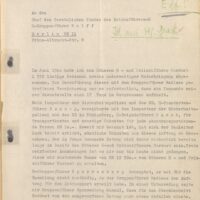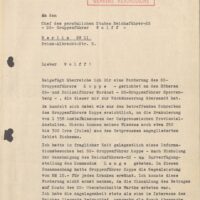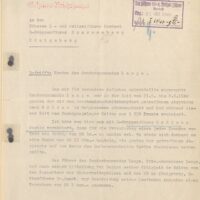22-02-1941 Letter from Wilhelm Koppe to Karl Wolff on Sonderkommando Lange in Soldau: “I took 1,558 troublesome people away”
As Wilhelm Rediess declined to pay 10 Reichsmarks for each institutional inmate killed by the Sonderkommando Lange in Soldau and requested a decision from the Reichsführer-SS, Wilhelm Koppe reiterates his position on this matter to Karl Wolff, chief of the personal staff of the Reichsführer-SS. Koppe notes that he “took 1,558 troublesome people away from the Higher SS and Police Leader Northeast for alternative accommodation” and emphasises “it was necessary for a Kommando from my office to stay in East Prussia for 17 days”. He stresses that East-Prussia’s “Gauleiter Koch has agreed to cover all expenses associated with this order”. Additionally, the payment will be also used to fund “Sonderkommando Lange’s stay in Holland ordered by the Reichsführer-SS with over RM 3,000”.









